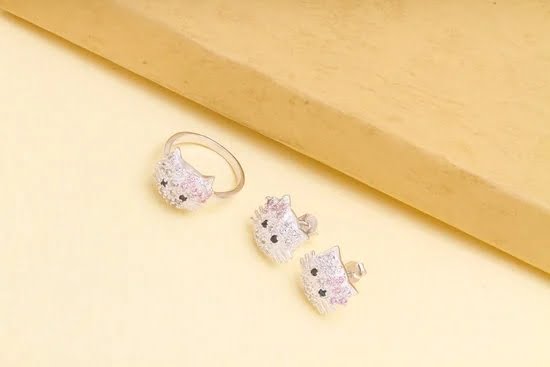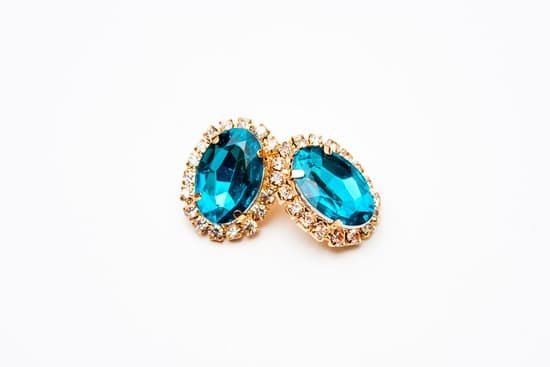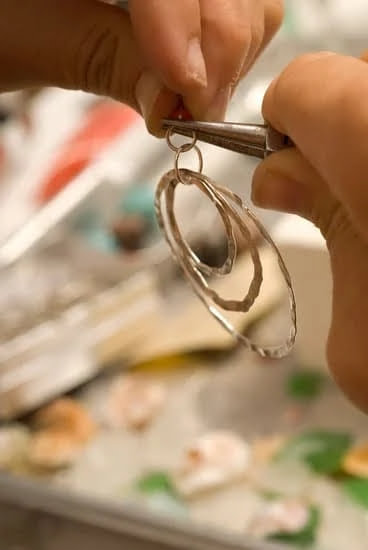Handmade jewelry holds a special place in the hearts of many, with its unique designs and personal touch. However, maintaining the quality of these precious pieces is crucial, especially when it comes to preventing rusting. In this article, we will delve into the beauty and appeal of handmade jewelry, as well as the significance of taking proactive measures to prevent rusting and preserve its longevity.
Handmade jewelry is often cherished for its individuality and craftsmanship, making it a popular choice for those seeking one-of-a-kind accessories. Whether it’s handcrafted earrings, necklaces, bracelets, or rings, each piece tells a story and adds a distinctive element to any ensemble. To keep these creations looking their best for years to come, it’s essential to understand the factors that contribute to rusting and how to combat them effectively.
Exposure to moisture and harsh chemicals are common culprits that can lead to rusting in handmade jewelry. Therefore, choosing the right materials is paramount in preventing deterioration. By opting for materials such as stainless steel, sterling silver, and gold – which are less prone to rusting – you can enjoy your handmade jewelry without worrying about tarnishing or discoloration due to oxidation.
Understanding the Causes of Rusting
When it comes to handmade jewelry, its unique appeal and beauty are often unmatched by mass-produced pieces. The craftsmanship and attention to detail that goes into creating handmade jewelry make it a cherished possession for many. However, one common concern with handmade jewelry is the potential for rusting, which can detract from its quality and longevity. Understanding the causes of rusting is essential in order to prevent this issue and maintain the beauty of your handmade pieces.
Factors that contribute to the rusting of handmade jewelry include exposure to moisture and harsh chemicals. When exposed to moisture, metals like iron and steel can undergo a chemical reaction with oxygen, leading to the formation of rust. Similarly, harsh chemicals can accelerate this process and cause damage to the metal components of handmade jewelry. In order to preserve the integrity of your handmade pieces, it is crucial to take proactive measures to prevent rusting.
To prevent rusting of handmade jewelry, it is important to choose the right materials that are less prone to corrosion. Materials such as stainless steel, sterling silver, and gold are known for their resistance to rusting, making them ideal choices for crafting jewelry. By selecting these materials for your handmade pieces, you can minimize the risk of rust forming and ensure that your jewelry maintains its quality over time.
Proper storage and care are also key factors in preventing rusting and preserving the beauty of handmade jewelry. Storing your pieces in air-tight containers or using anti-tarnish strips can help protect them from moisture and environmental elements that may lead to rusting. Additionally, regular cleaning and maintenance are essential in removing any build-up or contaminants that could compromise the integrity of your handmade jewelry.
In order to maintain the quality and beauty of handmade jewelry, it is important to take proactive measures in preventing rusting. By understanding the factors that contribute to rusting, choosing the right materials, implementing proper storage and care techniques, as well as utilizing protective coatings or sealants when necessary, you can ensure that your handmade pieces remain in pristine condition for years to come.
Choosing the Right Materials
When it comes to handmade jewelry, one of the key considerations for preventing rusting is choosing the right materials. The materials used in crafting handmade jewelry play a crucial role in determining its resistance to rust and corrosion. By selecting the best materials, you can ensure that your handmade jewelry remains beautiful and retains its quality for years to come.
Here are some of the best materials for handmade jewelry that are less prone to rusting:
- Stainless Steel: Known for its durability and resistance to corrosion, stainless steel is a popular choice for handmade jewelry. It is an affordable and low-maintenance option that can withstand exposure to moisture without rusting.
- Sterling Silver: Sterling silver is a classic choice for handmade jewelry, valued for its luster and elegance. When properly cared for, sterling silver jewelry can last a lifetime without succumbing to rust or tarnish.
- Gold: As a precious metal, gold is highly resistant to rust and corrosion. Whether it’s 14k, 18k, or 24k gold, handmade jewelry made from this material can withstand the test of time and maintain its beauty with proper care.
In addition to these materials, other options like titanium, platinum, and certain types of brass and bronze can also provide excellent resistance against rusting. By carefully choosing the right materials for your handmade jewelry, you can minimize the risk of rusting and ensure that your pieces continue to shine brilliantly.
It’s important to note that even with these durable materials, proper care and maintenance are still essential to prevent any potential issues with rusting. However, starting with the right materials sets a strong foundation for preserving the longevity and quality of your cherished handmade jewelry.
Proper Storage and Care
One of the key factors in preventing rusting and maintaining the quality of handmade jewelry is proper storage and care. By following a few simple tips and techniques, you can ensure that your handmade jewelry stays beautiful and free from rust for years to come.
Firstly, it is essential to store handmade jewelry in a dry place away from moisture and harsh chemicals. This helps prevent the oxidation process that leads to rusting. Using air-tight containers or resealable plastic bags can also help create a barrier against moisture, especially in humid environments.
Another effective method to prevent rusting is the use of anti-tarnish strips or tabs. These strips are designed to absorb moisture and other tarnish-causing elements, effectively protecting the jewelry from rust and discoloration. Placing these strips in your storage containers or jewelry boxes can significantly extend the life of your handmade jewelry.
It’s also important to keep your handmade jewelry separate from each other during storage, as contact between different metals can cause chemical reactions that lead to tarnishing and rusting. For instance, storing sterling silver with gold or other base metals can result in faster oxidation. Therefore, using individual compartments or soft fabric pouches for each piece of jewelry can help prevent this issue.
| Handmade Jewelry Care | Effective Techniques |
|---|---|
| Proper Storage | Avoid moisture and harsh chemicals |
| Anti-Tarnish Strips | Absorb moisture and protect from tarnishing |
| Separate Storage | Avoid chemical reactions between metals |
Cleaning and Maintenance
When it comes to handmade jewelry, proper cleaning and maintenance are essential to prevent rusting and maintain its shine and luster. Handmade jewelry is delicate and requires special care to ensure that it stays in top condition for a long time.
Gentle Cleaning Techniques
One of the best ways to clean handmade jewelry is by using mild soap and warm water. Simply mix a small amount of mild dish soap with warm water in a bowl, and then soak the jewelry for a few minutes. Use a soft brush or cloth to gently scrub away any dirt or build-up. Be sure to rinse the jewelry thoroughly with clean water to remove any soap residue, and then pat it dry with a soft cloth.
Avoid Harsh Chemicals
It’s important to avoid using harsh chemicals or abrasive cleaners on handmade jewelry, as they can damage the metal and lead to rusting. Avoid using bleach, ammonia, or other strong cleaning agents. Instead, stick to gentle cleaning methods that won’t compromise the quality of the jewelry.
Professional Cleaning
For particularly delicate or intricate pieces of handmade jewelry, it may be best to take them to a professional jeweler for cleaning. They have the expertise and tools needed to clean the jewelry thoroughly without causing any damage. A professional jeweler can also inspect the jewelry for any signs of wear or potential rusting, catching it early before further damage occurs.
By following these best cleaning practices, you can remove any build-up that may lead to rusting while maintaining the shine and luster of your handmade jewelry. Proper cleaning and maintenance will help preserve the beauty and quality of your cherished pieces for years to come.
Protective Coatings and Sealants
Types of Protective Coatings
When it comes to preventing rusting in handmade jewelry, protective coatings can provide an additional layer of defense. One popular option is a clear lacquer coating, which creates a barrier between the metal and external elements. Another common choice is rhodium plating, especially for silver jewelry, as it not only prevents rusting but also enhances the shine and durability of the metal.
Benefits of Sealants
Sealants are another effective method for preventing rusting in handmade jewelry. They work by creating a protective seal over the surface of the metal, preventing moisture and air from coming into contact with the metal. One popular sealant is wax, which can be applied to jewelry to create a physical barrier that prevents rusting. Another option is nano-ceramic sealant, which forms a thin and transparent layer over the jewelry to protect it from corrosion.
Application Techniques
Applying protective coatings and sealants to handmade jewelry requires precision and care to ensure that every part of the piece is properly covered. Techniques such as electroplating, spraying, or dipping are commonly used to apply protective coatings to jewelry. When it comes to sealants, careful hand application is often preferred to ensure that all areas of the jewelry are effectively sealed against rusting.
By using these protective coatings and sealants, you can add an extra layer of defense against rusting for your handmade jewelry. Whether it’s through clear lacquer coatings or wax sealants, these methods can help preserve the beauty and quality of your handmade pieces for years to come.
Regular Inspections and Maintenance
Handmade jewelry is a popular choice for many people due to its unique designs and personalized touch. However, one common concern among handmade jewelry enthusiasts is the possibility of rusting, which can affect the quality and longevity of these pieces. To prevent rusting and preserve the beauty of handmade jewelry, regular inspections and maintenance are crucial.
One of the most important ways to prevent rusting in handmade jewelry is to inspect it regularly for any signs of corrosion or discoloration. By catching these signs early, you can take proactive measures to address the issue before it worsens. This includes looking for areas where the metal may have been exposed to moisture or chemicals that could lead to rusting.
In addition to regular inspections, proper maintenance is key to preventing rusting in handmade jewelry. This includes cleaning the pieces regularly with a soft cloth and mild detergent to remove any buildup that could contribute to corrosion. It’s also important to store handmade jewelry properly, away from moisture and harsh chemicals, to minimize the risk of rusting over time.
| Handmade Jewelry Materials | Rust-Prevention Features |
|---|---|
| Stainless Steel | Durable and resistant to rust |
| Sterling Silver | Can be prone to tarnishing but less susceptible to rust |
| Gold | Highly resistant to corrosion or rusting |
Conclusion
In conclusion, handmade jewelry is a timeless and unique form of adornment that requires proper care to maintain its quality and luster. By understanding the causes of rusting, choosing the right materials, implementing proper storage and care techniques, regular cleaning and maintenance, and the use of protective coatings, individuals can prevent rusting and preserve the beauty and quality of their handmade jewelry for years to come.
It is essential to take proactive measures to ensure that cherished pieces retain their allure and value.
One of the most effective ways to prevent rusting in handmade jewelry is by choosing the right materials. Stainless steel, sterling silver, and gold are excellent options as they are less prone to rusting compared to other metals. Additionally, proper storage in air-tight containers with anti-tarnish strips can help protect jewelry from moisture and harsh chemicals that may lead to rusting.
Regular inspections and maintenance are also crucial in preventing rusting. By checking for any signs of corrosion or discoloration early on, individuals can address any potential issues before they worsen. This proactive approach can significantly extend the lifespan of handmade jewelry and maintain its pristine condition.
Frequently Asked Questions
How Do You Make Jewelry Rust Proof?
To make jewelry rust-proof, you can apply a clear sealant or protective coating to the metal parts of the jewelry. This will create a barrier between the metal and any moisture or chemicals that could cause rust.
How Do You Make Jewelry Not Rusty?
Preventing jewelry from becoming rusty involves keeping it dry and storing it in a cool, dry place when not in use. Wiping down jewelry after wearing it and avoiding contact with harsh chemicals can also help prevent rust.
How Do You Keep Custom Jewelry From Tarnishing?
To keep custom jewelry from tarnishing, store it in airtight containers or ziplock bags to minimize exposure to air and moisture. You can also clean custom jewelry regularly with a soft cloth to remove any tarnish buildup and keep it looking its best.

Welcome to my jewelry blog! My name is Sarah and I am the owner of this blog.
I love making jewelry and sharing my creations with others.
So whether you’re someone who loves wearing jewelry yourself or simply enjoys learning about it, be sure to check out my blog for insightful posts on everything related to this exciting topic!





